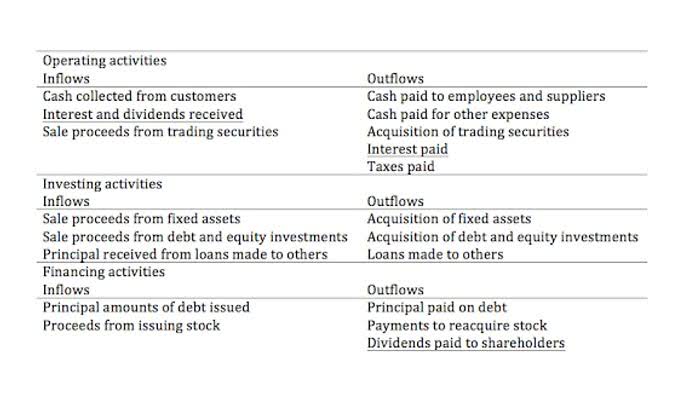
The low-cost method allows investors to sell the lowest-priced shares first. This method might be chosen if an investor wants to realize a capital gain on an investment. By subtracting COGS from revenue, you can determine your gross profit, a key indicator of your https://www.bookstime.com/ business’ financial health. As a result, you can set the most competitive prices to ensure optimal profitability. For example, the seafood company, mentioned earlier, would use their oldest inventory first (or first in) in selling and shipping their products.
FIFO vs. Specific Inventory Tracing
When prices are rising, First In First Out tends to increase the value of ending inventory on the balance sheet, reflecting a higher current asset value. This, in turn, leads to a higher net income reported on the income statement since the cost of goods sold (COGS) is based on the older, typically cheaper inventory. Conversely, in a deflationary environment, First In First Out can lead to lower net income figures.
- Double Entry Bookkeeping is here to provide you with free online information to help you learn and understand bookkeeping and introductory accounting.
- In normal economic circumstances, inflation means that the cost of goods sold rises over time.
- However, LIFO inventory management may not be the best choice for managing perishable goods or items with limited shelf life.
- Depending upon your jurisdiction, your business may be required to use FIFO for inventory valuation.
- FIFO is one of several ways to calculate the cost of inventory in a business.
When to Consider Other Inventory Methods

FIFO is straightforward and intuitive, making it popular as an accounting method and useful for investors and business owners trying to assess a company’s profits. It’s also an accurate system for ensuring that inventory value reflects the market value of products. To keep track of the movement and usage of inventory within your warehouses, implement robust inventory tracking and management processes.
- Financial reporting standard is another difference between these inventory valuation methods.
- He has been the CFO or controller of both small and medium sized companies and has run small businesses of his own.
- Average cost inventory is another method that assigns the same cost to each item and results in net income and ending inventory balances between FIFO and LIFO.
- Instead of selling its oldest inventory first, companies that use the LIFO method sell its newest inventory first.
- When sales are recorded using the LIFO method, the most recent items of inventory are used to value COGS and are sold first.
- Using our original table from above, the cost of goods sold for the sale would be $723.50 (65 x $10.35 + 5 x $10.15) – a $21.10 or 3% difference.
Major Differences – LIFO and FIFO (During Inflationary Periods)

Assuming that prices are rising, this means that inventory levels are going to be highest as the most recent goods (often the most expensive) are being kept in inventory. This also means that the earliest goods (often the least expensive) are reported under the cost of goods sold. Because the expenses are usually lower under the FIFO method, net income is higher, resulting in a potentially higher tax liability.
![]()
Because more expensive inventory items are usually sold under LIFO, the more expensive inventory items are kept as inventory on the balance sheet under FIFO. Not only is net income often higher under FIFO, but inventory is often larger as well. Of course, if your company manufactures unique items based on customer specifications or your how to do fifo method products take longer than a year to produce, neither FIFO nor LIFO may be appropriate. These manufacturers may use alternative inventory accounting methods, such as the specific identification or percentage of completion methods. The FIFO method assumes that a manufacturer sells its inventory in the same order that it was manufactured.
- These upsides could be beneficial when reporting financial results to investors or lenders.
- Now that we have ending inventory units, we need to place a value based on the FIFO rule.
- Companies dealing with products that tend to become obsolete or “go out of style” relatively quickly use FIFO as a standard method.
- In the first example, we worked out the value of ending inventory using the FIFO perpetual system at $92.
- Second, every time a sale occurs, we need to assign the cost of units sold in the middle column.

Modern inventory management systems can forecast demand patterns by leveraging data analytics and predictive algorithms. These patterns can predict which products are likely to be sold first. You can decide which inventory items to prioritize, reducing the risk of obsolescence and waste. It assumes that the oldest inventory costs are used first for accounting purposes. In practice, it might not be emphasized in the actual sale of the physical inventory.
Pro: Higher valuation for ending inventory
The FIFO method is considered the theoretically correct inventory valuation method, as in most industries, the cost flow assumption coincides with the actual flow of products. It makes business sense to sell your older inventory first and reduce the risk of inventory obsolescence. The First-In, First-Out (FIFO) is a widely used method for inventory management at the end of any accounting period. Here, the oldest inventory items are sold or used first, and the most recent stock will be the last to be used or go for sale. Consider a hypothetical scenario where a company has to choose between First In First Out and Last In, First Out (LIFO) for inventory accounting.

Leave inventory management to the pros (ShipBob)
And, in some cases, FIFO could actually decrease profit margins, especially during inflation or when inventory costs increase. One disadvantage of using FIFO is the increased risk of inventory obsolescence, especially if you manage rapidly changing or seasonal products. This is because FIFO prioritizes the sale of older inventory items before newer ones, which could lead to potential losses if more in-demand products don’t sell. This method ensures that the first products you purchase or create are the first to go out when customers place orders.



